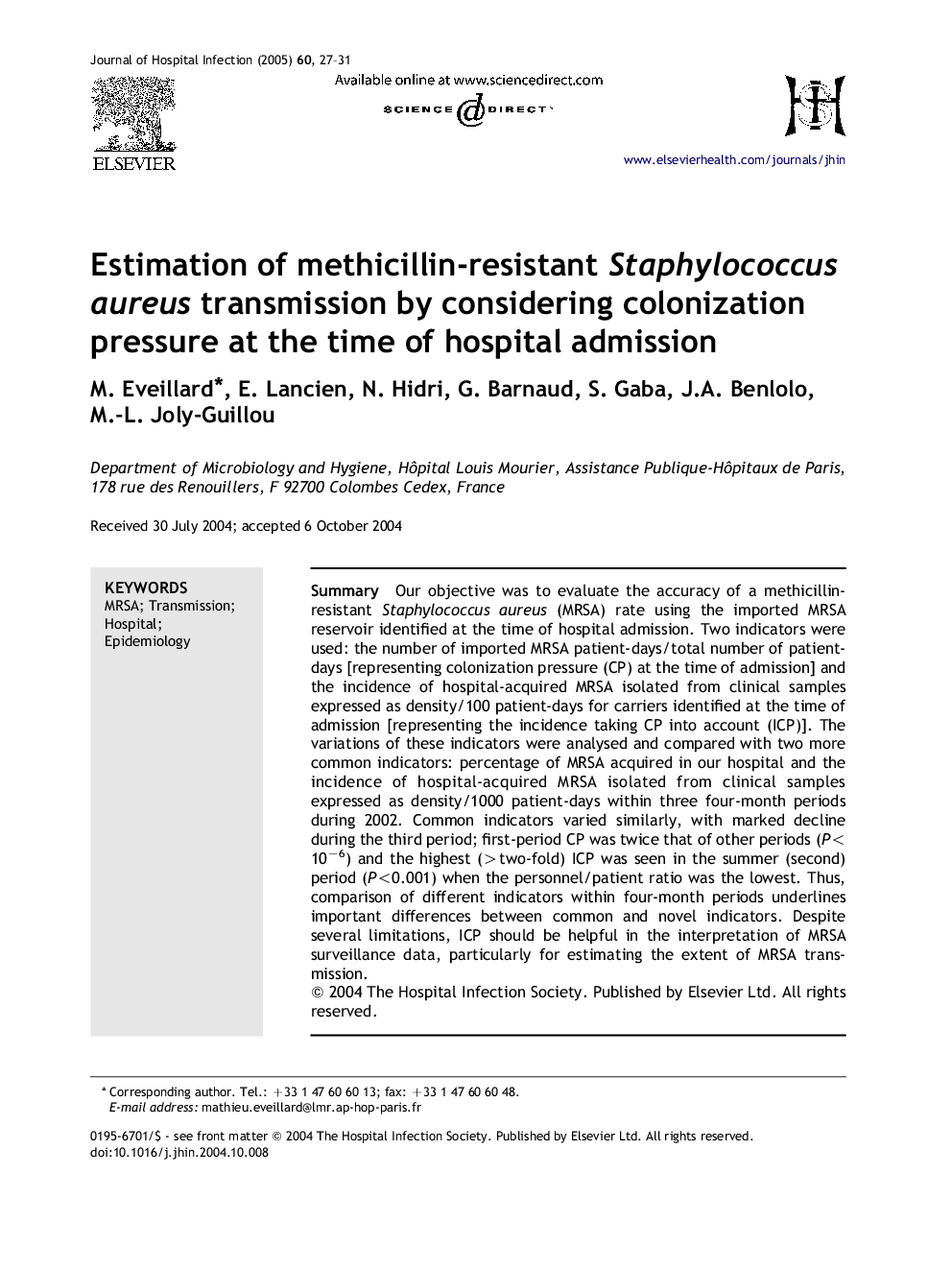| Article ID | Journal | Published Year | Pages | File Type |
|---|---|---|---|---|
| 9269253 | Journal of Hospital Infection | 2005 | 5 Pages |
Abstract
Our objective was to evaluate the accuracy of a methicillin-resistant Staphylococcus aureus (MRSA) rate using the imported MRSA reservoir identified at the time of hospital admission. Two indicators were used: the number of imported MRSA patient-days/total number of patient-days [representing colonization pressure (CP) at the time of admission] and the incidence of hospital-acquired MRSA isolated from clinical samples expressed as density/100 patient-days for carriers identified at the time of admission [representing the incidence taking CP into account (ICP)]. The variations of these indicators were analysed and compared with two more common indicators: percentage of MRSA acquired in our hospital and the incidence of hospital-acquired MRSA isolated from clinical samples expressed as density/1000 patient-days within three four-month periods during 2002. Common indicators varied similarly, with marked decline during the third period; first-period CP was twice that of other periods (P<10â6) and the highest (>two-fold) ICP was seen in the summer (second) period (P<0.001) when the personnel/patient ratio was the lowest. Thus, comparison of different indicators within four-month periods underlines important differences between common and novel indicators. Despite several limitations, ICP should be helpful in the interpretation of MRSA surveillance data, particularly for estimating the extent of MRSA transmission.
Keywords
Related Topics
Life Sciences
Immunology and Microbiology
Applied Microbiology and Biotechnology
Authors
M. Eveillard, E. Lancien, N. Hidri, G. Barnaud, S. Gaba, J.A. Benlolo, M.-L. Joly-Guillou,
